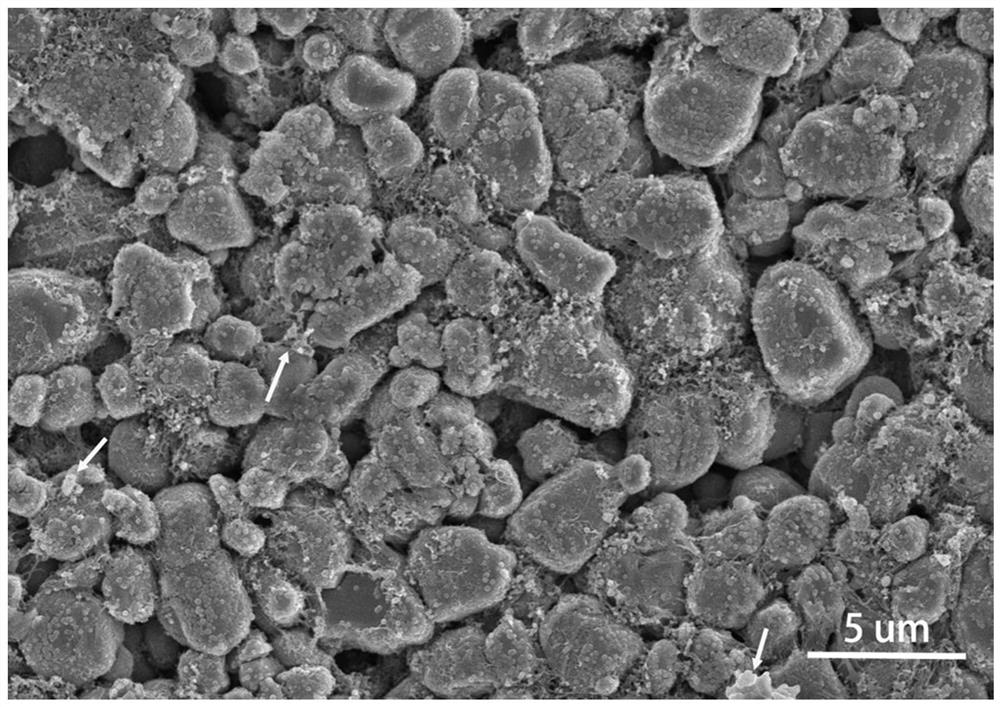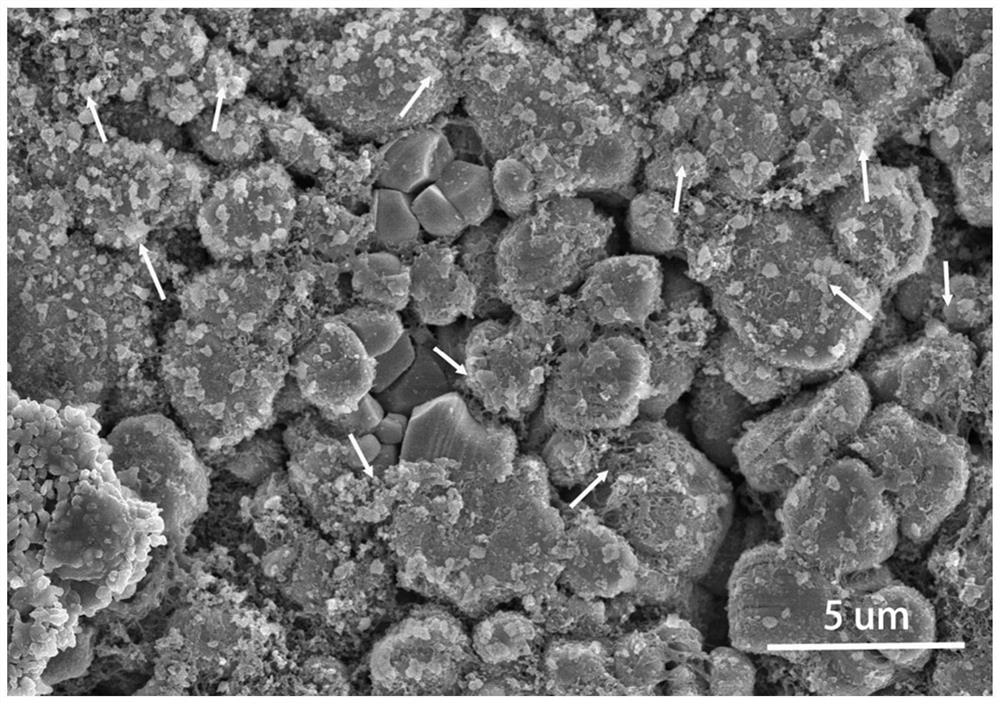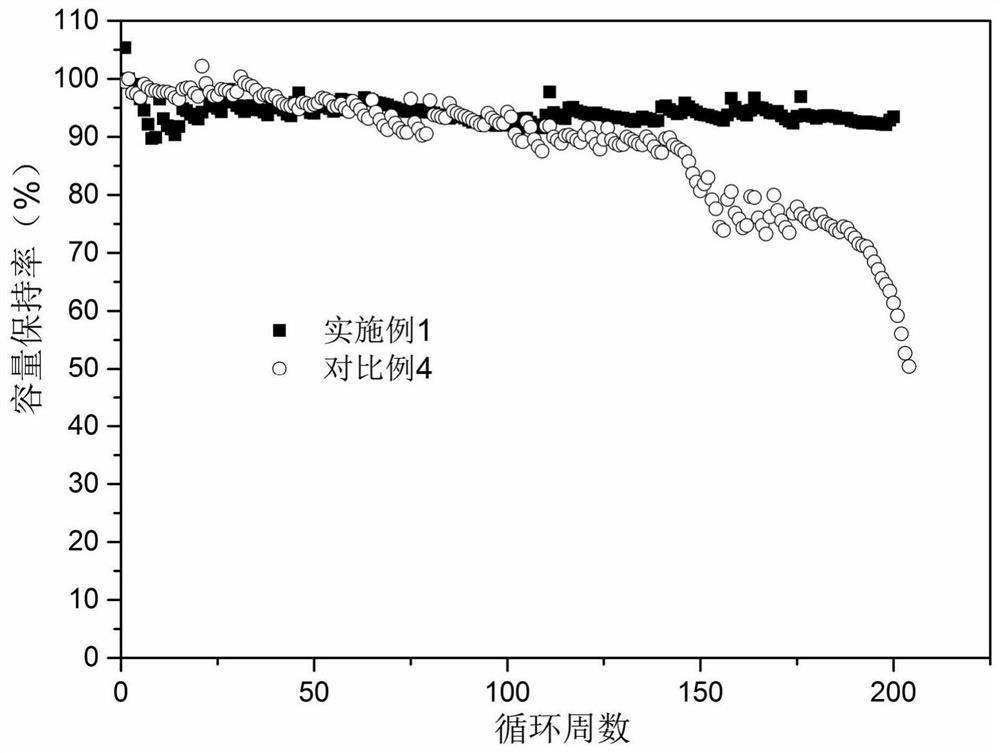Phosphate as well as preparation method and application thereof
A phosphate ester and reaction technology, applied in the field of phosphate ester and its preparation, can solve the problems of inability to suppress side reactions, single function, increase battery internal resistance, etc., achieve low impedance, less dosage, and inhibit contact reaction effects
- Summary
- Abstract
- Description
- Claims
- Application Information
AI Technical Summary
Problems solved by technology
Method used
Image
Examples
preparation example Construction
[0057] A kind of preparation method of above-mentioned phosphoric acid ester, comprises the steps:
[0058] S1: by alcohol R 1 OH and phosphorus pentachloride (PCl 5 ) reaction to obtain the intermediate The H required for this step reaction 2 O is moisture in the air or additionally added;
[0059] S2: by alcohol R 2 OH reacts with it to obtain the target product
[0060] S3: by alcohol R 3 OH reacts with it to give the product
[0061] As preferably, the mol ratio of alcohol and PCI5 in S1 is 1: (3~10); The mol ratio of alcohol and intermediate in S2 is 1: (2~5); The mol ratio of alcohol and intermediate in S3 has no special requirement, is generally 1:1.
[0062] Preferably, the reaction temperature of S1, S2 and S3 is 0-60° C., and the reaction time is 0.5-10 h.
[0063] S1, S2 and S3 are performed in a solvent; the solvent is selected from ethers, hydrocarbons and aromatic hydrocarbon solvents, such as diethyl ether, furan, n-hexane, cyclohexane and toluene,...
Embodiment 1
[0079] Preparation of Compound A: The first step reaction: add 208.0g of phosphorus pentachloride (PCl 5 ) and 2L n-hexane solvent, and stirred evenly at room temperature. Then slowly add methoxymethanol containing 6.2g (methoxymethanol and PSCl 3 The substance mass ratio is 1:10) n-hexane solution, after the addition, continue to stir for 1 h to obtain the reaction solution. 15.8 g of intermediate were obtained by distillation under reduced pressure The yield was 88.3%.
[0080] The second step reaction: 12.5g of the above-mentioned product is transferred to a single-necked round bottom flask, 0.05L of ether is added, and 2.0g of allyl alcohol (the mass ratio of allyl alcohol to the intermediate is 1:2) is added, and the mixture is heated at room temperature Stirred for 2h, purified by distillation under reduced pressure to obtain 5.8g intermediate The yield was 82.5%.
[0081] The third step reaction: transfer 4.9g of the above product to a single-necked round botto...
Embodiment 2
[0094] Preparation of Compound B:
[0095] The first step reaction: add 208.0g of PCl to the reaction vessel 5 and 2L of solvent cyclohexane, and stirred evenly at 0°C. Then slowly add 25.3g 2-methoxyethanol (2-methoxyethanol and PSCl 3 The substance mass ratio is 1:3) cyclohexane solution, after the addition, continue to stir the reaction solution for 0.5h. 50.5 g intermediate was obtained by distillation under reduced pressure The yield was 78.7%.
[0096] The second step reaction: transfer 48.3 g of the above intermediate to a single-necked round bottom flask, add diethyl ether and start stirring at 0°C. Then slowly add a toluene solution containing 2.8 g of propargyl alcohol (the mass ratio of propargyl alcohol to the intermediate is 1:5), and continue stirring for 5 h after the addition to obtain a reaction solution. 8.7 g of intermediate were obtained by distillation under reduced pressure The yield was 81.5%.
[0097] The third reaction step: transfer 8.7 g o...
PUM
| Property | Measurement | Unit |
|---|---|---|
| softening point | aaaaa | aaaaa |
| electrical conductivity | aaaaa | aaaaa |
| electrical conductivity | aaaaa | aaaaa |
Abstract
Description
Claims
Application Information
 Login to View More
Login to View More - R&D
- Intellectual Property
- Life Sciences
- Materials
- Tech Scout
- Unparalleled Data Quality
- Higher Quality Content
- 60% Fewer Hallucinations
Browse by: Latest US Patents, China's latest patents, Technical Efficacy Thesaurus, Application Domain, Technology Topic, Popular Technical Reports.
© 2025 PatSnap. All rights reserved.Legal|Privacy policy|Modern Slavery Act Transparency Statement|Sitemap|About US| Contact US: help@patsnap.com



